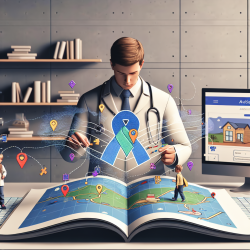Unlocking the Power of Surprise: How Pupillary Responses Can Enhance Children's Learning
As a passionate advocate for improving children's learning outcomes through data-driven decisions, I am excited to share insights from a fascinating research article titled Seeing the Error in My “Bayes”: A Quantified Degree of Belief Change Correlates with Children’s Pupillary Surprise Responses Following Explicit Predictions. This study explores how children's pupillary responses to surprising events can inform belief revision and enhance learning.
Understanding Pupillary Responses
Pupil dilation, or the "pupillary surprise response," is a physiological reaction that occurs when children experience surprise. This response is measurable and can be used as an indicator of cognitive processes such as attention and learning. The study investigates how Bayesian models can predict these responses and how they correlate with belief changes in children.
Bayesian Models and Learning
Bayesian models provide a framework for understanding how children revise their beliefs based on new information. The study compares two computational measures of surprise: Shannon Information and Kullback–Leibler divergence. Shannon Information considers the likelihood of an observed event given prior beliefs, while Kullback–Leibler divergence measures the dissimilarity between prior and updated beliefs.
Key Findings
The study found that children's pupillary responses were significantly correlated with Kullback–Leibler divergence when they actively made predictions. This suggests that when children are engaged in predicting outcomes, their physiological responses can signal the degree of belief change required to accommodate new information. In contrast, there was no significant correlation between Shannon Information and pupillary responses.
Implications for Practitioners
For practitioners in speech-language pathology and education, these findings highlight the importance of engaging children in prediction-based learning activities. By encouraging children to make predictions, we can potentially enhance their learning outcomes by leveraging their physiological responses to surprise. This approach can be particularly effective in online therapy sessions, where real-time feedback and engagement are crucial.
Practical Applications
- Incorporate Prediction Tasks: Design activities that require children to predict outcomes before revealing the actual results. This can help activate their prior knowledge and enhance learning through surprise.
- Monitor Pupillary Responses: Use eye-tracking technology to monitor children's pupillary responses during learning tasks. This can provide valuable insights into their cognitive processes and help tailor interventions.
- Leverage Data-Driven Insights: Utilize Bayesian models to predict and analyze children's learning patterns. This can inform personalized learning plans and improve overall outcomes.
Encouraging Further Research
While this study provides valuable insights, further research is needed to explore the full potential of pupillary responses in enhancing children's learning. Practitioners are encouraged to collaborate with researchers to investigate new ways of leveraging physiological data to inform educational practices.
To read the original research paper, please follow this link: Seeing the Error in My “Bayes”: A Quantified Degree of Belief Change Correlates with Children’s Pupillary Surprise Responses Following Explicit Predictions.










